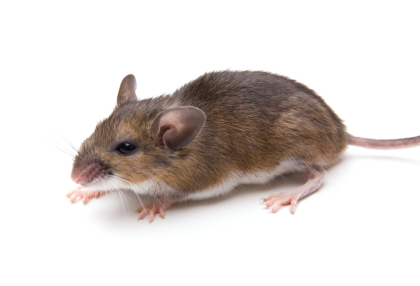Overview

Facts
White-footed mice are widely distributed throughout the United States. They are nuisances to farmers and gardeners because they primarily feed on seeds and cause destruction to crops, newly planted fields, and stored foods. In residential areas, they become pests when they invade homes and contaminate food. White-footed mice also carry diseases like Hantavirus, which can be deadly to humans.
Identifying Features
The small mice usually grow about half a foot in length, including their thin tails, and weigh less than one ounce. Their large thin ears and beady black eyes afford them excellent senses of sight and hearing. They also have strong senses of smell that help them locate individual seeds in the ground. White-footed mice have characteristic white feet, as well as white fur on their bellies. The rest of their coat is reddish-brown.
Habitat / Region
Forests, fields, and marshy areas with dense brush are the most common white-footed mice homes. Urban environments throughout the Eastern U.S. also host large numbers of the pest. White-footed mice are natural climbers, jumpers, and swimmers that tend to spend a lot of time in trees and foraging along the ground. The rodents either repurpose abandoned bird nests or dig burrows under the roots of shrubs and bushes. White-footed mice nests are woven together from twigs and leaves and lined with soft material like hair, fur, and bits of cloth.